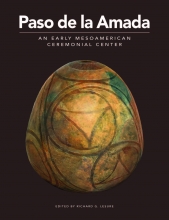The 1990 excavations were conducted over three days at the end of March, the 1992 excavations during six weeks in November and December, and the 1993 excavations during eight weeks from February to early April, in each case with workmen from the ejido of Buenos Aires. Two methods were followed, one for the stratigraphic investigations of Trench 1 and Test Pits 1 to 5, the other for the areally extensive excavations. Stratigraphic investigations were small test units (1 x 2 m) or trenches (in sections of 1 x 3 m) excavated in arbitrary 20 cm levels. Extensive excavations followed a grid of 2 x 2 m units. During the 1992 season we excavated Units E2 through E4 and F2 through F4; in addition, we excavated the southern half of Units E1 and F1. In the 1993 season, the units excavated were G5 through G7, H4 through H8, I4 through I7, J4 through J7, and K4 through K7.
The extensive excavations proceeded by natural stratigraphic units. Excessively thick natural units were sometimes subdivided arbitrarily for more refined stratigraphic control. Units thus defined stratigraphically and/or arbitrarily were referred to as lots and each was given a unique number. During the 1992 season, Lots 1 through 24 were assigned; in the 1993 season we used lot numbers 25 through 52. Since extensive stratigraphic samples had already been obtained in the test units and trenches, not all lots of the extensive excavations were screened. Unscreened units included all those that had been stratigraphically determined to be part of episodes of platform construction. All culturally significant lots, including occupation surfaces, floors, post holes, features, and midden deposits, were screened through a 5 mm mesh. Soil samples were taken from features and midden deposits for flotation, and one floor, Floor 2, was sampled in 50 cm square units for recovery of micro-artifacts. In this last procedure, the methods employed were the same as those followed in the sampling of Floors 4 and 5 in Mound 6.
